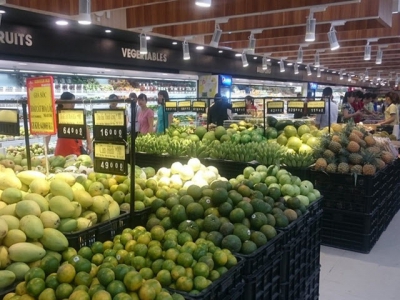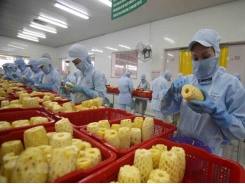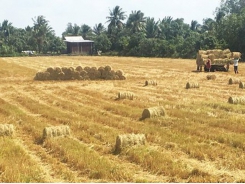Vietnam aims $10 bln in fruit, vegetable export value by 2030

Vietnam expects to gain $8-10 billion from shipping fruits and vegetables abroad, with revenue of processed products accounting for at least 30 percent of the total by 2030.
Under a project to develop the fruit and vegetable process sector during 2021-2030 recently approved by the Prime Minister, Vietnam targets to attract investment in 50-60 fruit and vegetable processing establishments, and build several modern groups and enterprises who have the good competitive capacity, Vietnamplus reported.
With a view to achieving the goals, Vietnam will invest heavily to improve processing ability, give priority to processing key fruitsand vegetables which have high values, set up material zones, and develop markets for the products.
The project laid stress on the necessity to build processing and packaging facilities and storage warehouses and install suitable equipment to reduce post-harvest losses.
Besides, it is crucial to attract investment to ensure that all of the production facilities will be well equipped with necessary machines by 2030.
Along with encouraging businesses to invest in food irradiation centers at large-scale fruit and vegetable farming areas so that their products meet international standards, the country will promote intensive processing and diversify processed products.
Additionally, the country will establish specialized fruit and vegetable cultivating areas that are able to provide some 5-6 million tonnes of high-quality products for processing by 2030.
Fruit and vegetable exports hit over $3.2 billion in 2020
Vietnam earned $3.26 billion from exporting fruit and vegetables in 2020, a year-on-year decline of 13 percent, the Ministry of Agriculture and Rural Development (MARD) reported.
Exports were down because many items with high export value saw volumes fall sharply, such as dragon fruit, which accounts for about 36 percent of total export value but fell nearly 10 percent in volume, bananas (down 13 percent), durian (56 percent), lychee (22 percent), and watermelon (36 percent).
Dang Phuc Nguyen, General Secretary of the Vietnam Fruit and Vegetable Association (VINAFRUIT), attributed the result to declining imports from China, saying it imported 25 percent less fruit and vegetables than in 2019.
He noted, however, that exports to other countries still posted stable growth, such as Thailand (140 percent), the US and the Republic of Korea (RoK) (both 11 percent), and Japan (5 percent).
Fruit and vegetable exports were severely influenced by the development of the COVID-19 pandemic around the world, Nguyen said.
According to MARD, Vietnam also spent $1.29 billion on importing fruit and vegetables last year, down 27.5 percent against 2019.
China, the US, and Australia are Vietnam’s largest providers, the ministry said.
Related news
Tools

Phối trộn thức ăn chăn nuôi

Pha dung dịch thủy canh

Định mức cho tôm ăn

Phối trộn phân bón NPK

Xác định tỷ lệ tôm sống

Chuyển đổi đơn vị phân bón

Xác định công suất sục khí

Chuyển đổi đơn vị tôm

Tính diện tích nhà kính

Tính thể tích ao




 Rice production efficiency of eight provinces in Mekong…
Rice production efficiency of eight provinces in Mekong…  Despite decreasing rice-growing area, farmers still earn profits
Despite decreasing rice-growing area, farmers still earn profits